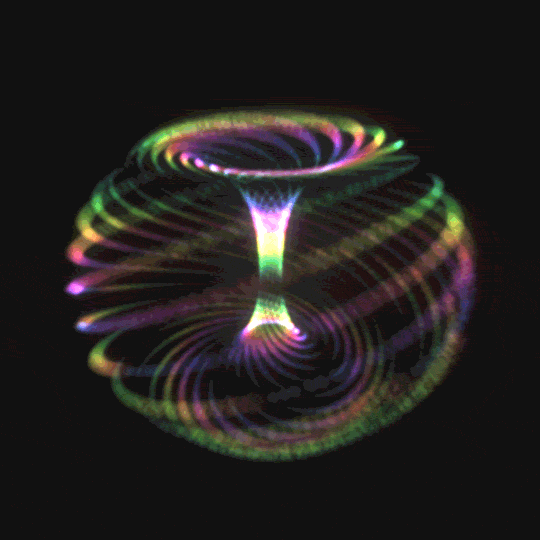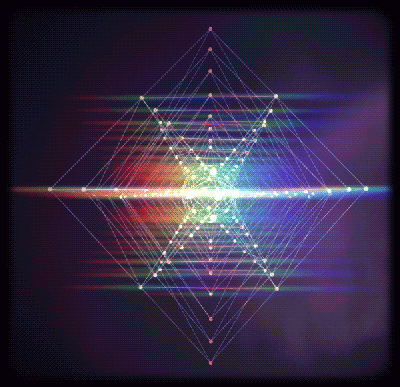
Is there a limit to how dense an object can be? “….maybe there are no limits to density!”
Explaining a mysterious barrier to fusion known as the 'density limit' ..... For more than 50 years physicists have puzzled over a daunting mystery: Why do tokamak plasmas spiral apart when reaching a certain maximum density and halt fusion reactions? This "density limit" serves as a barrier that prevents tokamaks from operating at peak efficiency, and understanding what sets this maximum density would speed the development of fusion as a safe, clean and abundant energy source. Recently, researchers at the U.S. Department of Energy's Princeton Plasma Physics Laboratory (PPPL) have revisited an old idea: bubbles called magnetic islands.
Daring move for first US-China fusion team by Staff Writers, Washington DC (SPX) Nov 13, 2015. The way to increase the power and efficiency of magnetic fusion energy may be to risk running the plasma - hotter than 100-million-degrees C - closer than ever to the wall...
Computers uncover mechanism that stabilizes plasma within tokamaks A team of physicists led by Stephen Jardin of the U.S. Department of Energy's Princeton Plasma Physics Laboratory (PPPL) has discovered a mechanism that prevents the electrical current flowing through fusion plasma from repeatedly peaking and crashing. This behavior is known as a "sawtooth cycle" and can cause instabilities within the plasma's core.
New Super H-mode regime could greatly increase fusion power 100 million degrees Centigrade. His surprising discovery was that a model called EPED predicted more than one type of edge region in tokamak plasmas, with the previously unknown Super H-mode among them. Such regions are called "pedestals" because they serve as ledges in H-mode plasmas from which the pressure drops off sharply. The higher and wider the pedestal the greater the density and pressure, which together act like thermoses to contain the man-made plasma at more than 100 million degrees C.
Greenwald Limit
Fundamentally Speaking........ tokamaks
Variables to the
theoretical density limit suggest unification/integration, common denominators, with equivalent energy differential reference frame substitutions, allowing
for measurement through the micro, meso, macro CURVE variations of space and
time utilizing the sine wave curve of
radius C positions between specified points.
NIF
is also in the fusion fray
One such study Density
limit in a first principles model of a magnetized plasma in the Debye–Hu¨ckel
approximation
appears
to be taking a more integrated variable approach: Lorentz force, Coulomb force, velocity, magnetic
field, absolute temperature, kB the Boltzmann constant, the discrete nature of
matter, the contribution of the ions, the boundary effects, and the
inhomogeneities of the macroscopic quantities characterizing the plasma, such
as temperature, magnetic field and density. More in general, one should consider
relativistic effects (the constant C), i.e., the retardation of the fields, and
thus emission of radiation.
Greenwald Limit nG=Ipπa2
where nG
is the density in 1020 m-3, Ip the
plasma current in MA, and a the minor radius in m.
In tokamaks (and Reversed
Field Pinches[2]), exceeding the Greenwald limit
typically leads to a disruption, although sometimes the limit can be
crossed without deleterious effects (especially with peaked density profiles). Stellarators can typically exceed the Greenwald
limit by factors of 2 to 5, or more (replacing Ip by an
equivalent current corresponding to the magnetic field).
The mechanism
behind this phenomenological limit is not fully understood, but probably
associated with edge gradient limits. Recently, an explanation based on the
formation of magnetic islands was
However, for what concerns the
analytical side of the problem, in order to produce more exact fits with the
experimental data one should push the theory much more forward. First one
should settle the problem of the contribution of the ions, and include
sustainment in the model. Then one should consider the boundary effects, and the
inhomogeneities of the macroscopic quantities characterizing the plasma, such
as temperature, magnetic field and density. More in general, one should consider
relativistic effects, i.e., the retardations of the fields, and thus emission of
radiation. Furthermore, one should consider higher order perturbation effects,
going beyond the Debye–Hu¨ckel approximation. Useful information on all these
problems should also be obtained through numerical studies, along the lines for
example of the recent work [42] on strongly coupled plasmas.
We will show that this leads to a
theoretical electron density limit ne given by the law
ne = 3
B2 µ0mc2
, (1)
where B is the magnetic field, µ0 the
vacuum permeability, c the speed of light and m the electron mass. Using ne =
1/a3 where a is the mean interelectron distance, relation (1) can also be put
in the particularly expressive form
1 2µ0
B2a3 =
1 6
mc2 , (2)
according to which the transition from
order to chaos occurs when the magnetic energy inside a cell of volume a3 =
1/ne just equals (apart from a factor 1/6) the electron rest energy mc2. We
will show below that the theoretical formula (1) fits not too badly the
phenomenological density limit for plasma collapses in a large set of fusion
devices, and this suggests that the contributions of the ions, which we have
here neglected, should be of the same order of magnitude as that of the
electrons. This conjecture is supported by a further result, which will be
published elsewhere (see [10] for the case of a smeared out background).
Namely, one can discuss the stability properties of the equilibrium solutions
of a neutral system of electrons and ions in a constant magnetic field, and one
finds a bifurcation to an unstable solution, at a critical density which is the
same as (1) apart from a factor of order one.
The Goal:

The Sun (macro) is a massive atomic furnace that works by converting
hydrogen into helium. Hydrogen is the lightest and most abundant element in the
universe. It has one proton in its nucleus. Temperatures and densities in the
centre of the Sun are so great, 1.5 million°C and around 200 billion
atmospheres, that colliding hydrogen nuclei sometimes fuse into helium nuclei.
The creation of each helium nucleus requires four hydrogen nuclei.
Figure 1 - Extreme
ultraviolet imaging telescope image of the Sun.
From SOHO project (http://sohowww.nascom.nasa.gov/)
From SOHO project (http://sohowww.nascom.nasa.gov/)
One helium nucleus has
99.3% of the weight of four hydrogen nuclei. This excess 0.7% of hydrogen mass
compared with helium mass is converted into energy. In perspective, the Sun
converts 600 million tons of hydrogen into 596 million tons of helium every
second. The extra 4 million tons is converted into energy - in this case
radiation in the form of gamma rays.

You can imagine the
enormity of the energy generated when you realise that, given Albert Einstein's famous equation E=MC2,
the 4 million ton differential is multiplied by the speed of light, squared.
This energy is so great that the Sun gives off 6200 watts of light from every
square centimetre of its surface. Compare this to a 60-100 Watt domestic light
globe. As far as we know, the Sun has been giving off this light steadily for
the last 4.5 billion years,
========================================================

Here is How
A more refined view of E=MC2 discloses Light (C) as The Radius of Curvature of All Natural Law, equating to the kinetic energy equivalent of the mass energy of matter
meaning if a differential of energy equal to this quantity exists between the observer and the point which he is observing, the natural laws will be suspended. If the energy differential is in excess of the quantity C, the laws will appear to operate in reverse at that point.
 The far more fundamental and simpler definitions of space time mass matter energy gravity become mandatory:
The far more fundamental and simpler definitions of space time mass matter energy gravity become mandatory:- The Quantity C: Possessing a Significance Far Greater than Attributed
- Gravity – As Viewed Through the Radius (VC)
- Space as Observed through the Curve of Radius Light
- Matter and Mass – Quantum Gravity and the Holographic Mass
- Beyond A Uni-Dimensional Perception of TIME
- The Nonlinearity of Physical Law
- Definition
....








